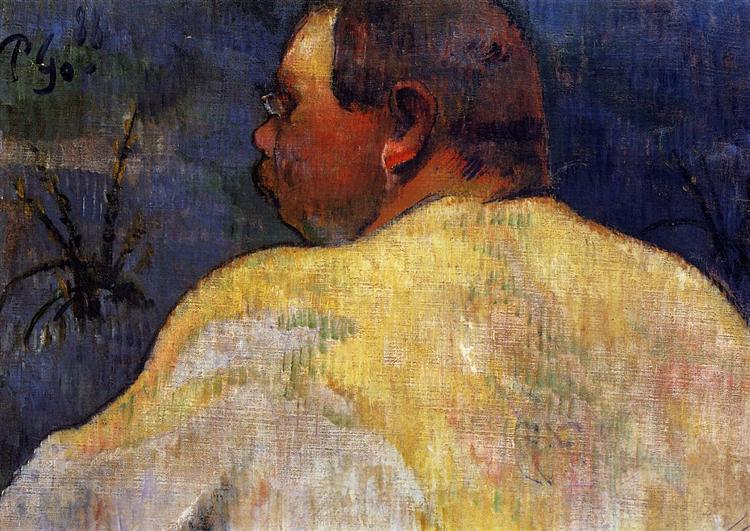Description
Paul Gauguin's painting "Captain Jacob", created in 1888, is a work that encapsulates the essence of a transformative period in art, characterized by the search for new forms of expression and the bold use of color and composition. This portrait, which shows Captain Jacob in an exotic setting, is a demonstration of Gauguin's interest in the human figure and his ability to integrate it into habitats that evoke both reality and a fantasy in which the everyday and the symbolic are intertwined.
Captain Jacob appears in the painting as a central figure, his bearing and clothing suggesting an authoritative and noble character. The choice of colours surrounding him, mostly saturated and vibrant, highlights his presence, making him the focal point of the painting. The tones used by Gauguin are emblematic of his style, which is often characterised by the use of unnatural colours, seeking to express an emotion or atmosphere rather than a literal representation. The contrast between the colour of the captain's skin, a deep brown tone, and the green, lush surroundings creates a visual tension that draws the viewer in.
The composition is articulated through lines that guide the viewer’s gaze towards Jacob, reinforcing his central role in the visual narrative. However, this is not just an isolated portrait; the background, with its organic shapes and earthy, vegetal colour palette, suggests a wider context, an environment that could be interpreted as a reflection of the duality between the civilised and the wild, a recurring theme in Gauguin’s work, particularly influenced by his experience in Tahiti and his desire to escape Western conventions.
The figure of Captain Jacob can be seen as a symbol of the exploration and imperialism of the time, themes that Gauguin addressed on several occasions, exploring the impact of colonisation on indigenous cultures. Although there is no explicit narrative that connects the captain to a wider context, his presence is imbued with these subtextual allusions, causing the viewer to reflect on the relationship between the portrait and the world beyond it.
Gauguin, a pioneer of Post-Impressionism, was noted for his approach to spatial composition in addition to his use of color and form. His ability to break down reality into its basic elements and reconstruct them on a pictorial plane is clearly on display in Captain Jacob. The work reflects not only the artist's technical mastery but also his deep connection to the ideologies and cultural tensions of his time, inviting an ongoing dialogue about the meaning of art in a changing context.
In short, Captain Jacob is not just a portrait; it is a work rich in symbolism and context, encapsulating the themes of identity and exploration that were central to Paul Gauguin's career. The integration of a vibrant setting and the depiction of a character charged with symbolism make this painting an essential piece for understanding the path of modernity in art and the evolution of portraiture in the late 19th century.
KUADROS ©, a famous painting on your wall.
Hand-made oil painting reproductions, with the quality of professional artists and the distinctive seal of KUADROS ©.
Painting reproduction service with satisfaction guarantee. If you are not completely satisfied with the replica of your painting, we will refund 100% of your money.

